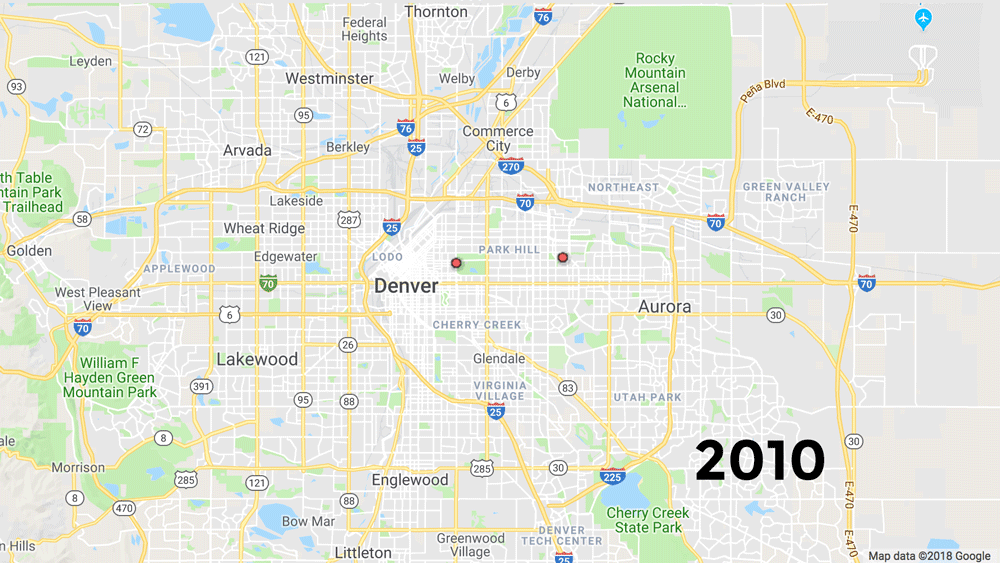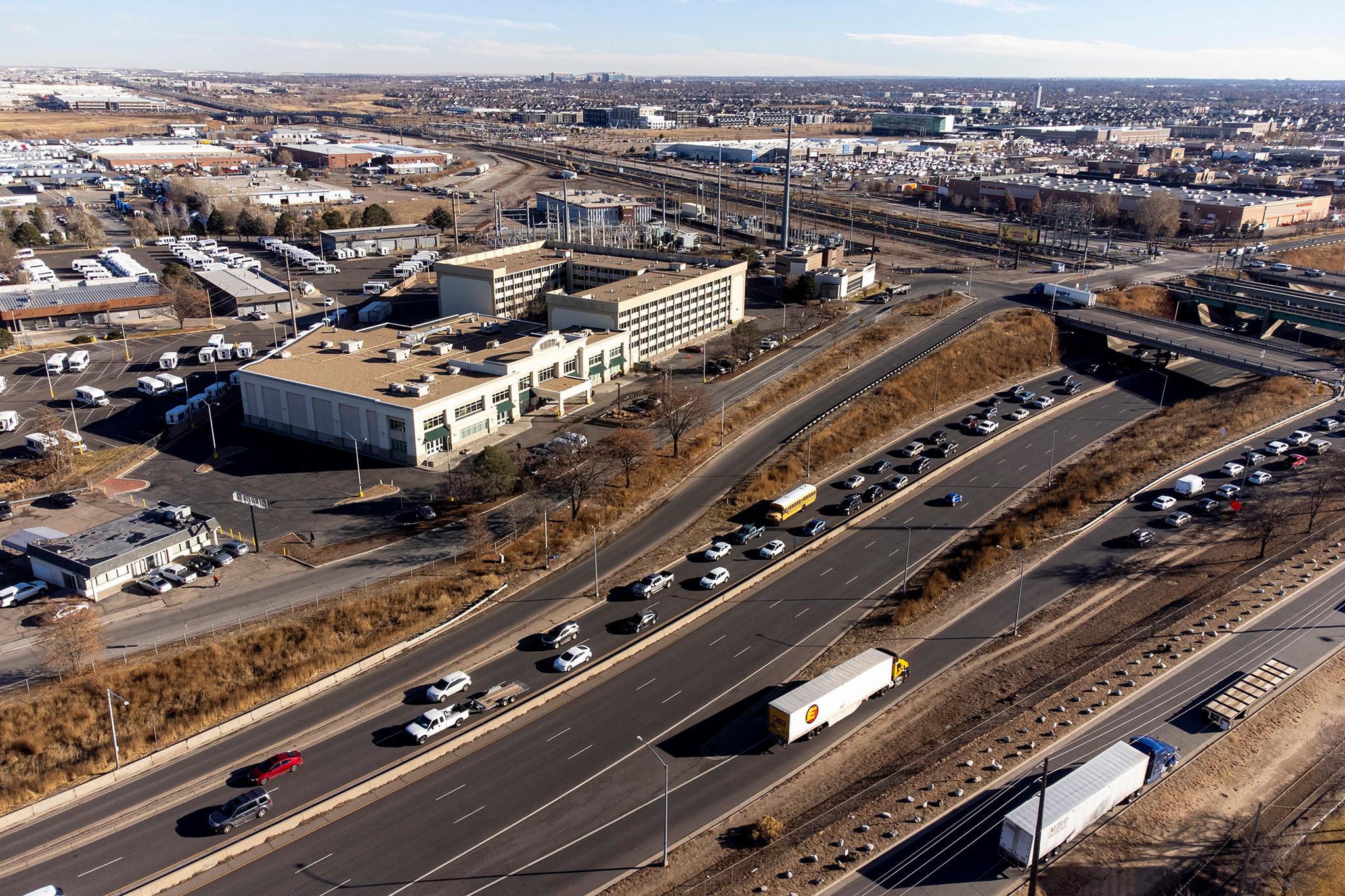When Denver real estate agent Kassidy Benson was first looking at the 1,600-square-foot house she would eventually buy in the Skyland neighborhood, its nearly 8,000-square-foot lot struck her as huge.
By the time she'd closed on the property two years ago, Benson had done enough research to determine her area was among those in Denver where she could build an accessory dwelling unit -- also known as a granny flat. Benson was curious as to whether her neighbors knew about the zoning for ADUs, a type of structure that has been getting a lot of attention in Denver and beyond lately because it as seen as a strategy for building wealth and affordable housing.
Benson sent postcards to nearby homeowners with similarly large lots inviting them to a meeting last year at which she and a builder shared what they knew.
"A lot of people had no idea (about ADUs), had never heard of it," Benson found. (Denverite recently reported on the pace of ADU construction in Denver.)
Now she is trying to share information even further. In the last week she launched an online database for the public showing properties for sale in Denver that are zoned for ADUs. She sees the database and an accompanying primer on ADUs ("ADUs are an option to add housing without scraping existing homes and changing the architecture of neighborhoods") as both a way to spread useful information and perhaps to drum up a little business that exploits what she knows.
"You go down this rabbit hole and you learn all this stuff about ADUs and it takes years to learn it," she said.
Laura Swartz, a communications specialist for the city's Development Services department, said that while a quick glance at Benson's materials showed the guidance appeared to be correct, "I would encourage anyone interested in ADUs to confirm using the city's ADU zoning map."
That ADU map can be found here, and another good resource is the Denver Zoning Code.
While information on them may be easily accessed, ADUs are far from backyard DIY projects.
Even if your local zoning allows ADUs, you'll still need building and site permits for the structures; you're likely to need to work with an architect and contractors; and you may have to navigate opposition from your neighbors. The expense of preparing to build, let alone building, puts ADUs out of reach of many. Benson's own plans for an ADU have not been realized.
"I'm struggling with the financing," she said, saying the ADU she envisions would cost about $300,000.
Benson's ADU might be an actual granny flat.
"My grandmother's 90," she said. "We really struggle to find a place where she'd be independent and still nearby."
Benson got advice from Will Martin, a architectural designer who along with his wife Annie Martin founded and own Studiobvio. Martin said an ADU feasibility study they did for Benson was a "beta test" for a product that could help homeowners and potential homeowners understand issues such as the aspects of their lot, including whether it sits on a floodplain, that affect whether they can build an ADU even if they have the right zoning; the construction, surveying, permitting and other fees that go into the cost of an ADU; and possible tax implications. The Martins' studio has done two other studies, which cost between $1,500 and $2,000, since preparing one for Benson and one client is planning to build an ADU, Martin said.
Martin also helped Benson build her ADU database, using information from the city and creating an algorithm that factored in variables such as lot size and access requirement.
Martin, who said his firm combines research, public advocacy and architecture, said the goal was to give consumers the information they need to make what is likely to be their largest investment -- in a home.
Across town Benson, Renee Martinez-Stone, director of a neighborhood support project called the West Denver Renaissance Collaborative, is working on a pilot aimed at making ADUs accessible to low- and moderate-income Denver residents. Martinez-Stone has spent months working with city officials, Habitat for Humanity, the Denver Housing Authority and others to develop ADU designs and plans to finance them. Homeowners who participate have to meet income limits and agree to rent their ADUs at below-market prices. Martinez-Stone envisions the project's first ADUs being erected this year in West Denver and hopes the pilot will one day inform the way granny flats are used across Denver.
Martinez-Stone's ADU pilot is open only to West Denver residents, but a handbook her collaborative has developed with information on ADU zoning and other considerations is available to anyone via the West Denver Renaissance Collaborative's Web site.
The form may not be a housing-crunch silver bullet, but ADU proponents seem to be building momentum.
The same week Benson launched her ADU database, Denver's City Council approved zoning changes necessary to allow a family in the Globeville-Elyria-Swansea area to turn a garage into an ADU. Community activists in the neighborhoods are exploring ADUs as one way to ensure the area remains home to low- and moderate-income families. And while Denver City Council members were deciding on the Globeville-Elyria-Swansea ADU, their policy-making counterparts in Englewood okayed an ordinance allowing ADUs in more than half that Denver suburb's residential areas.
Elsewhere, Los Angeles is piloting a program to help homeowners with the cost of building ADUs on the condition the structures then be rented to people experiencing homelessness who would get rental assistance and other support. In Portland, Ore. a startup called Dweller purchases and installs prefabricated ADUs in the yards of homeowners who get a share of the revenues from longterm rentals managed by another company.
In Denver, Martinez-Stone's project was one of three "innovative ideas" that Fannie Mae has funded as part of its quest to address the nation's affordable housing shortage. The West Denver project has also been supported by the Strong, Prosperous, And Resilient Communities Challenge, a national public-private initiative to support U.S. amid fast social and economic change.
Blueprint Denver, the planning vision document that has emerged from a lengthy public consultation process and will become policy if its gets City Council approval, mentions ADUs in several contexts. They are seen, for example, as a way to encourage the preservation of smaller, more affordable housing by allowing homeowner to add value by adding an ADU rather than scraping an old house. ADUs are also part of the Blueprint's discussion of the need to add density and to build wealth to help low-income Denverite homeowners stay in their homes in changing and gentrifying neighborhoods.
Martin, the architectural designer, said the ambition of the plan seems to be allowing broader adoption of ADUs throughout the city.
"Obviously we have a long way to go," he said.
Many residents expressed support for ADUs in the Blueprint public comment period. Some hesitancy also was evident. One neighborhood association, for example, recommended to the city that "before any ADUs are allowed , the allowed uses would need to be carefully considered, as well as post-construction monitoring."













